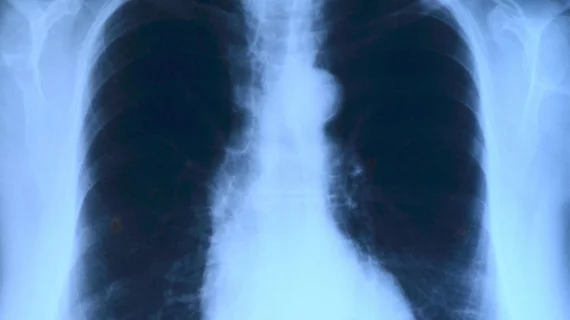Chest X-rays alone ineffective in COVID triage
A new analysis published in European Radiology suggests that chest radiographs alone may be insufficient in determining disease severity for patients with COVID.
The research indicates that there is significant reader variability in COVID classifications among different specialties when chest X-rays alone are the diagnostic tool of choice [1].
“While immediate interpretation by specialist chest radiologists is desirable, this is unrealistic given demands, and interpretation falls frequently to non-chest radiologists, radiologists in training, or attending clinicians,” corresponding author Arjun Nair of University College London Hospital and colleagues explained. “However, we are unaware of any study that compares agreement and variation between these groups for CXR diagnosis and severity of COVID-19.”
In March of 2020, the British Society of Thoracic Imaging (BSTI) and NHS England developed a decision support to help assess patients’ chest radiographs for suspected COVID in the absence or delay of laboratory testing. This system puts an emphasis on findings present on imaging—findings that are used to classify disease severity and therefore guide treatment decisions.
Since different readers can arrive at different conclusions, it is important to understand whether the classification system has universal success among different specialties, authors of the new paper suggested. To better understand this, the researchers compared the BSTI categories assigned to 305 COVID chest x-rays by physicians with varying backgrounds, including consultant chest radiologists, general consultant (GCR) and specialist registrar (RSR) radiologists and infectious diseases clinicians (IDR).
Reader agreement was between 28-37% for the indeterminate BSTI category. This improved to 66-76% for the classic/probable category but remained low—49%—among general consultant radiologists. Agreement in the normal categories was similar across groups apart from infectious disease clinicians, who recorded an agreement of 31%.
The wide-ranging variability in each category and among every group prompted the authors of the paper to suggest that it is perhaps the exam itself that has limited utility in classifying COVID severity, rather than the readers. In fact, the variations were so significant that the authors cautioned they could “render CXR ineffective for triage using such categories.”
“Although thoracic CT has a higher sensitivity for diagnosing COVID-19, CXR has been used and investigated in this triage role both in the UK and internationally. However, our results do have important implications when using CXR for diagnosis because interpretation appears susceptible to substantial inter-reader variation,” the authors concluded.
To learn more about the study, click here.

